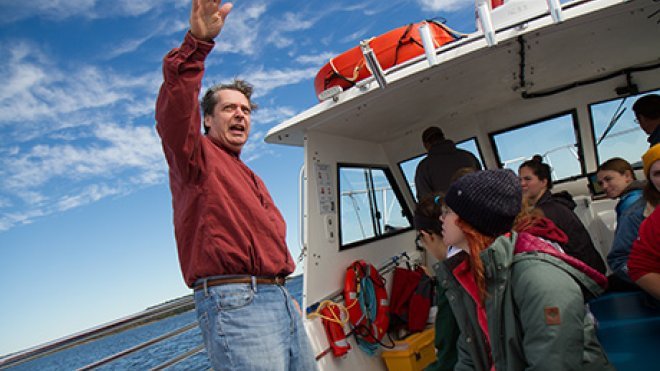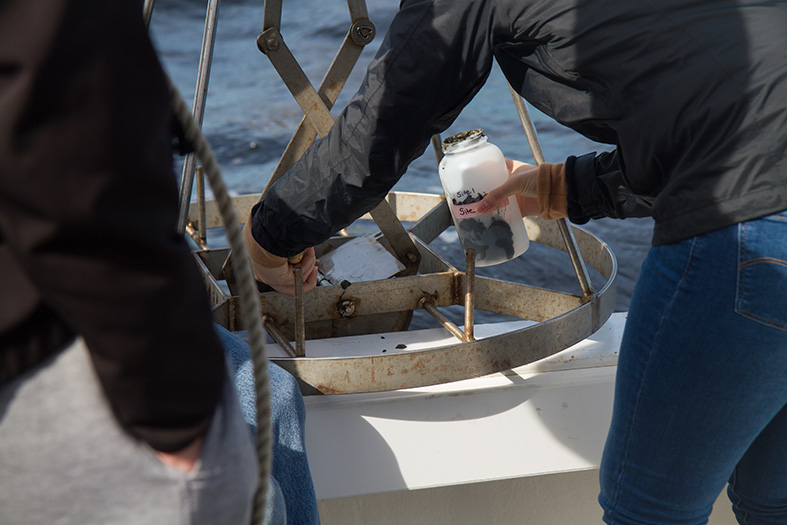Beyond RWU’s Waterfront: Monitoring the Mount Hope Bay
RWU Chemistry professor brings students into his research tracking the aquatic chemistry of Mount Hope Bay

BRISTOL, R.I. – Beyond the shoreline of Roger Williams University’s Bristol campus lies a whole ecosystem hiding beneath the waters of Mount Hope Bay. One of Rhode Island’s natural beauties, Mount Hope Bay has made RWU’s waterfront campus a serene place for students and faculty to study, work and learn.
Now, using the university’s new 30-foot research vessel – the InVincebleSpirit – RWU Professor of Chemistry Stephen O’Shea is helping keep a watchful eye on the bay and is bringing his students in on the effort.
As part of his National Science Foundation’s Established Program to Stimulate Competitive Research (EPSCoR) grant, O’Shea is tracking the aquatic chemistry of Mount Hope Bay and involving his students deeply in the research. They are analyzing what chemicals have entered the water and distributed throughout the water column – a broader picture than any other researcher has created of the bay’s waters. Along with water chemistry, they are also studying sediment from the bay to understand the chemical make-up of its seafloor.
“It will give us a true snapshot of the chemistry in the bay,” O’Shea said. “It will give us a baseline of conditions in the water column and ocean sediment. By getting a handle on what’s going on with those water bodies, we can ascertain whether there’s an event going on in the bay. For example, if there was a deluge in which rainwater flooded and created a sewage overflow into the bay, you’d see an abundance of nutrients and microflora that’s not typically there.”
With several students funded as research fellows through the EPSCoR grant, they are working with O’Shea to collect samples from six sites in Mount Hope Bay, which is fed into by the Taunton River, Kickemuit River and Lee River. RWU’s research vessel – which was purchased with a National Science Foundation grant and outfitted with cutting-edge coastal research equipment thanks to a donation from an alumnus – is playing a key role in both allowing O’Shea to conduct his research but also letting him use it as a learning opportunity for his students.
But it’s not only his team of student-researchers who have benefited from this hands-on field science. Recently, for example, O’Shea brought his entire environmental chemistry laboratory out on the research vessel to collect samples of ocean sediment, conduct water depth experiments and use a high-tech multi-parameter sensor to measure water temperature and salinity at several points in the bay. The hands-on experience gives students a strong grasp of what a scientist does out in the field.

That learning then continues back in the lab where students learn to conduct experiments and work with cutting-edge lab instruments. O’Shea’s environmental chemistry students took the water samples they collected and put them under a microscope to study and understand the composition of the water. And later, in an upcoming lab, they will be looking at the ocean sediment to understand what kind of microbes are present and the environmental chemistry of the area.
The work they are doing not only gives them the training they need to succeed in the world of science, but also aids O’Shea’s in his research of monitoring Mount Hope Bay – something that everyone who enjoys the bay’s beauty can appreciate.